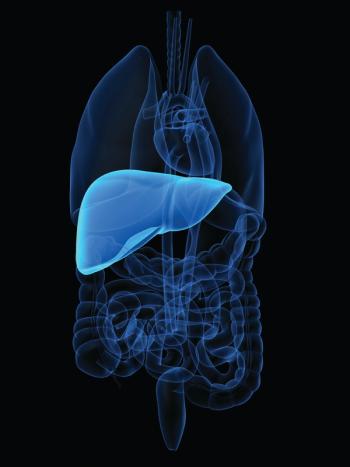
Oncology NEWS International
- Oncology NEWS International Vol 8 No 11
- Volume 8
- Issue 11
QUASAR Shows No Benefit for Levamisole in Colorectal Cancer
VIENNA, Austria-The combination regimen of 5-fluorouracil (5-FU) and levamisole is one of the National Cancer Institute’s recommendations for adjuvant treatment of stage C colorectal cancer. However, results from the first 5,000 patients enrolled in the QUASAR trial suggest that this advice may be open to question. “There is no improvement in survival or recurrence rate with levamisole, and there is no worthwhile benefit from high-dose folinic acid as compared with low-dose folinic acid,” QUASAR investigator R.G. Gray, MD, of the University of Birmingham (UK), said at the 10th European Cancer Conference (ECCO).
VIENNA, AustriaThe combination regimen of 5-fluorouracil (5-FU) and levamisole is one of the National Cancer Institutes recommendations for adjuvant treatment of stage C colorectal cancer. However, results from the first 5,000 patients enrolled in the QUASAR trial suggest that this advice may be open to question. There is no improvement in survival or recurrence rate with levamisole, and there is no worthwhile benefit from high-dose folinic acid as compared with low-dose folinic acid, QUASAR investigator R.G. Gray, MD, of the University of Birmingham (UK), said at the 10th European Cancer Conference (ECCO).
QUASAR, the lar-gest chemotherapy trial ever conducted in colorectal cancer, was designed to compare high-dose with low-dose folinic acid and levamisole vs placebo in patients with a clear indication for chemotherapy. The study also compared observation vs chemotherapy in patients with an uncertain indication for chemotherapy, but this part of the study is still blinded.
Investigators in 134 centers in five countries randomly assigned patients who had undergone complete resection and were node positive but metastasis free to receive one of four adjuvant chemotherapy regimens:
5-FU (370 mg/m² or, during radiotherapy, 300 mg/m²) plus high-dose L-folinic acid (in a fixed dose of 175 mg, equivalent to about 250 mg/m² of DL-folinic acid) plus levamisole (50 mg three times daily)
- 5-FU plus high-dose L-folinic acid (175 mg) plus placebo
- 5-FU plus low-dose L-folinic acid (25 mg) plus levamisole
- 5-FU plus low-dose L-folinic acid (25 mg) plus placebo
The option of whether to give 5-FU and L-folinic acid as six 5-day courses every 4 weeks or as 30 three-day courses every week was left up to individual clinicians. Levamisole was administered according to the Mayo Clinic regimen in 12 3-day courses every 2 weeks.
The first results of QUASAR showed absolutely no differences in either 5-year recurrence risk or 5-year survival between high-dose and low-dose folinic acid, Dr. Gray reported. Because of the large numbers, the possibility of this being a false-negative finding is very small, he emphasized. Dr. Gray also pointed out that the use of the high-dose regimen multiplied the cost of treatment 10-fold.
Similarly, the use of levamisole had little impact on outcome. The 5-year rates of recurrence and survival were actually worse among levamisole-treated patients, although these differences did not reach statistical significance. Another downside of levamisole was a doubling in the incidence of dermatologic toxicity.
The contribution of this study is remarkable; it strengthens what we already know, and, thanks to the inclusion of large numbers of patients, it will really affect clinical practice, said discussant Harry Bleiberg, MD, of Jules Bordet Institute, Brussels.
A possible weak point of QUASAR, Dr. Bleiberg said, is that it used confusing criteria for distinguishing between clear and uncertain indications for chemotherapy and left the decision to the treating physician. In addition, because the study organizers wanted to keep the trial design simple, they omitted standardized follow-up procedures that, Dr. Bleiberg suggested, could have jeopardized the evaluation of disease-free survival.
Other unresolved issues, he noted, are the potential impact of further treatment on outcome and the precise role of adjuvant chemotherapy in patients with rectal cancer.
Perhaps most important, Dr. Bleiberg said, QUASAR took 6 years to complete and we are now a step ahead. He cited ongoing studies that are comparing the Mayo Clinic regimen with either the thymidylate synthase inhibitor raltitrexed (Tomudex, investigational) or infusional 5-FU, and assessing the possible benefits of adding oxaliplatin (an investigational platinum) or irinotecan (Camptosar) to a 5-FU/folinic acid combination.
Articles in this issue
about 26 years ago
Anti-VEGF MoAb Promising in Phase II Renal Cancer Studyabout 26 years ago
Government Lawsuit Seeks Billions From Tobacco Industryabout 26 years ago
NCI Plans a Large Phase III Trial of Lymphoma Vaccineabout 26 years ago
NCCN Database Expanding to Include Cancer Pain Outcomesabout 26 years ago
Fewer Blacks Than Whites Receive Surgery for Early Stage Lung Cancerabout 26 years ago
NSABP Trial Examines Surgery’s Role in Breast Cancerabout 26 years ago
Congressional Spouses Honor Three for Cancer Preventionabout 26 years ago
Prophylactic Tamoxifen Debated at ECCOabout 26 years ago
Survival Advantage for Simultaneous Goserelin and RTabout 26 years ago
NCCR Honors Seven Members of Congress as ‘Champions’Newsletter
Stay up to date on recent advances in the multidisciplinary approach to cancer.



















































































